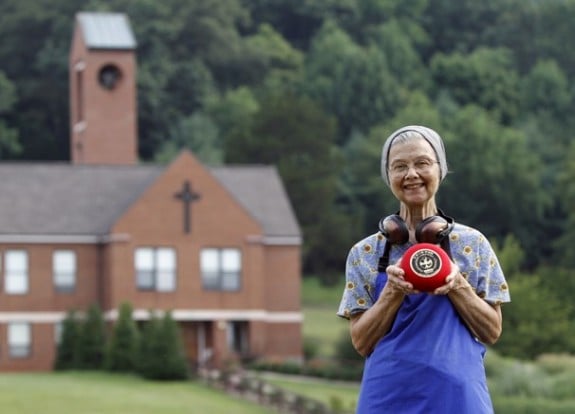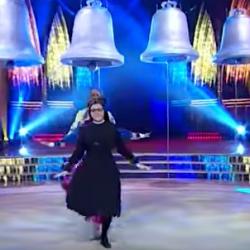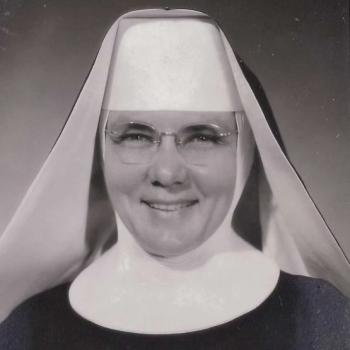
All Gouda gifts around us are sent from heaven above!
Details, from the Washington Post:
It is 10:05 a.m., and Sister Barbara Smickel is shoulder-deep in curds and whey. She is in the cheese barn at Our Lady of the Angels Monastery in Crozet, Va., located about 14 miles west of Charlottesville and down a winding gravel lane. The monastery is a plain yet well-kept brick building perched atop a grassy hillside. The red-and-white cheese barn sits just down the hill; rolling pastures of farmland visible from its small windows.
Amid the roar of a high-pressure hose, which is in use by another sister to clean a piece of equipment nearby, Sister Barbara’s movements are quiet and self-contained. It is a ritualistic habit born from more than two decades of experience and 619 (and counting) batches of Gouda, a cow’s-milk cheese made by cooking cultured milk until the whey separates from the curd. After cooking, the curds are “washed” by draining off some of the whey, then cut, pressed into wheels to expel moisture, and floated in a salty water bath overnight. This process is what defines Gouda, with its characteristic creamy texture and mild, sweet flavor.
Sister Barbara, 75, wears a blue hairnet, a smock printed with sunflowers and knee-high rubber boots. Her feet slosh quietly along the wet concrete floor and alongside a large stainless steel vat holding 725 gallons of curds and whey. She runs her hands through the warm and milky cottage cheeselike mixture. This moment, she tells me, when her sinewy arms search by feel alone for large clumps of curd to break apart, has become her favorite part of making cheese.
“It is very prayerful,” she says. “Like a communion with the Lord and what is becoming cheese under my fingers.”
In 1991, The Post Food section ran a storyon the monastery’s first wheels of Monastery Country Cheese. As one of six sisters sent by Mount Saint Mary’s Abbey in Massachusetts (the “motherhouse”) to open Our Lady of Angels Monastery in 1987, Sister Barbara says cheesemaking was part of their plan for self-support from the outset. It was, in fact, the reason they purchased the property, which had already been set up to make Gouda by the previous owner. However, good intentions rarely guarantee success in the often fickle world of food. When The Post last interviewed Sister Barbara, there was no way to know for sure just how they would fare.
Twenty years later, I stand in a darkened walk-in refrigerator with Sister Barbara and nearly five tons of two-pound Gouda wheels that are coated in a brilliant red wax. From now until the end of August, the sisters will produce and stockpile an additional 650 pounds per week in preparation for the Christmas rush. In 1991, the monastery sold about 10,500 pounds, but Sister Barbara expects they will nearly double that amount this year, close to 19,000 pounds. The nuns still eat it three or four times a week, Sister Barbara says, and she expects they will sell out by early December.
Needless to say, word of the Virginia nuns making Gouda cheese has spread. Retail sales have taken off, and self-support in the name of God and Gouda has followed.











